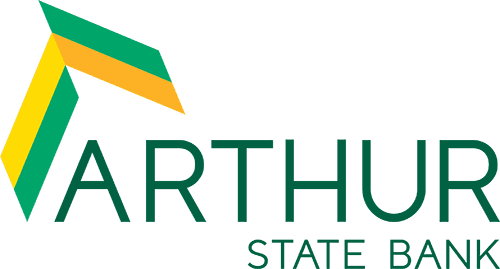Established via the passage of the Social Security Act in 1935, the United States’ Old-Age, Survivors, and Disability Insurance (OASDI) program — more commonly known as the Social Security program — is set to turn 90 years old in 2025. The federal program is designed to protect Americans from losing all their earnings, and thereby suffering a substantial loss in quality of life, as a result of retirement, disability or (for participants’ family members) the death of a household income provider.
To spotlight this valuable resource and its importance to tens of millions of Americans, each April serves as National Social Security Month, a monthlong observance geared toward educating people about the Social Security program and the services it offers. So here at Arthur State Bank, we’re taking the opportunity this April to set the record straight about a few widely held misconceptions regarding the U.S. Social Security program.
6 myths about Social Security — debunked
According to a 2023 AARP study, more than 95% of American adults consider Social Security an important government program, and more than 70% rank it among the most critical government programs. But despite the program’s widespread popularity, a number of long-believed Social Security myths persist.
To elevate your understanding of Social Security, read on to get the truth about six of these common misbeliefs:
- Myth No. 1: The retirement age for receiving full Social Security benefits is 65.
The facts: The age at which a worker can retire and receive 100% of his or her Social Security benefits — also known as full retirement age (or FRA) — varies by birth year. For those born in 1958, who will start to hit full retirement age in 2024, it is currently set at 66 years and eight months. From there, the FRA grows by two months per year until it reaches age 67 for those born in 1960 or later. - Myth No. 2: The program is going broke.
The facts: The Social Security program will continue to have funding for as long as payroll taxes are collected from American workers and employers. With its revenue generated via FICA (Federal Insurance Contributions Act) and SECA (Self-Employed Contributions Act) taxes, the program is funded using a pay-as-you-go system, and the taxes currently being collected largely cover the benefits currently being distributed.
Funding challenges do exist, though. In past decades, the system took in more money than it paid out, helping it build a surplus of funds to pull from when needed. But it’s beginning to pay out more than it takes in, as the number of retirees has started to grow faster than the number of American workers paying into the system, and as the retirees are on average living (and collecting benefits) for longer durations.
Unless legislative changes are made, the Social Security program’s current surplus funds are projected to run out in 2034. If that happens and no changes are made, the program would still collect funds via the above-mentioned taxes, thereby giving it most of the money needed to pay out benefits. (Current projections put this at 80% of the funds needed to pay full scheduled benefits when the surplus runs out.) Top options for making changes to address the shortfall include raising the payroll tax rate, increasing the full retirement age or raising the income tax rate on distributed program benefits. - Myth No. 3: Social Security program funding is being drained by undocumented immigrants.
The facts: While non-U.S. citizens who legally live and work in the United States can qualify for Social Security, undocumented workers are not allowed to claim Social Security benefits. In some cases, reports by Social Security actuaries show, undocumented workers have managed to get Social Security numbers under false pretenses — and payroll taxes have been withheld from their paychecks. But because they are never able to claim Social Security benefits, this actually serves to benefit the program’s financial standing. - Myth No. 4: Social Security benefits are untaxed.
The facts: For previous generations of Social Security beneficiaries, the benefits paid out by the program actually did go untaxed. But in 1984, a provision of a Social Security overhaul passed during the Ronald Reagan administration made a portion of many recipients’ benefits taxable, with the size of the taxable portion varying based on income level. Under today’s guidelines, individual beneficiaries who make $25,000 to $34,00 per year, along with couples filing jointly who make $32,000 to $44,000 per year, can see up to half of their Social Security benefits subject to federal income taxes. Above these income levels, up to 85% of Social Security benefits are subject to federal income taxes, while below them, no federal taxes are taken out on Social Security benefits. Some states also collect income taxes on Social Security benefits. - Myth No. 5: The government taps into Social Security funds to pay for other programs.
The facts: Two trust funds hold the money used to pay out Social Security benefits — one for retirees and their surviving family members, and the other for people with disabilities. Neither is part of the U.S. government’s general fund, as Social Security is administered via a separate program that is self-funded.
However, the federal government does occasionally borrow money from Social Security funds, as the tax revenues that fund the program are invested in U.S. Treasury securities. Treasury bonds enable the government to spend the money invested in them on other programs, but the government must (and has never failed to) pay the money back with interest — and the interest results in a net gain of funding for the Social Security program. - Myth No. 6: If you keep working, you’ll permanently lose your Social Security benefits.
The facts: There is a Social Security rule known as the “earnings limit” (or “earnings test”) that reduces the amount of benefits available to recipients who choose to continue working while claiming Social Security benefits. But the reduction is not permanent, and the rule doesn’t apply to all working beneficiaries. Rather, it applies only to people claiming Social Security benefits and still working before their full retirement age, and it only withholds a portion of benefits when their work earnings exceed a set cap (that changes annually). Further, the benefits are later adjusted upward, so recipients can eventually recoup this temporarily withheld money over time.
Proudly serving South Carolina since 1933, Arthur State Bank offers accounts and services to meet a variety of financial needs. To help you achieve all your financial goals, the bank offers in-person service as well as a range of convenient digital solutions. To learn how Arthur State Bank can help you with banking needs ranging from checking and savings to retirement accounts, mortgages, other personal loans and more, visit arthurstatebank.com.






















